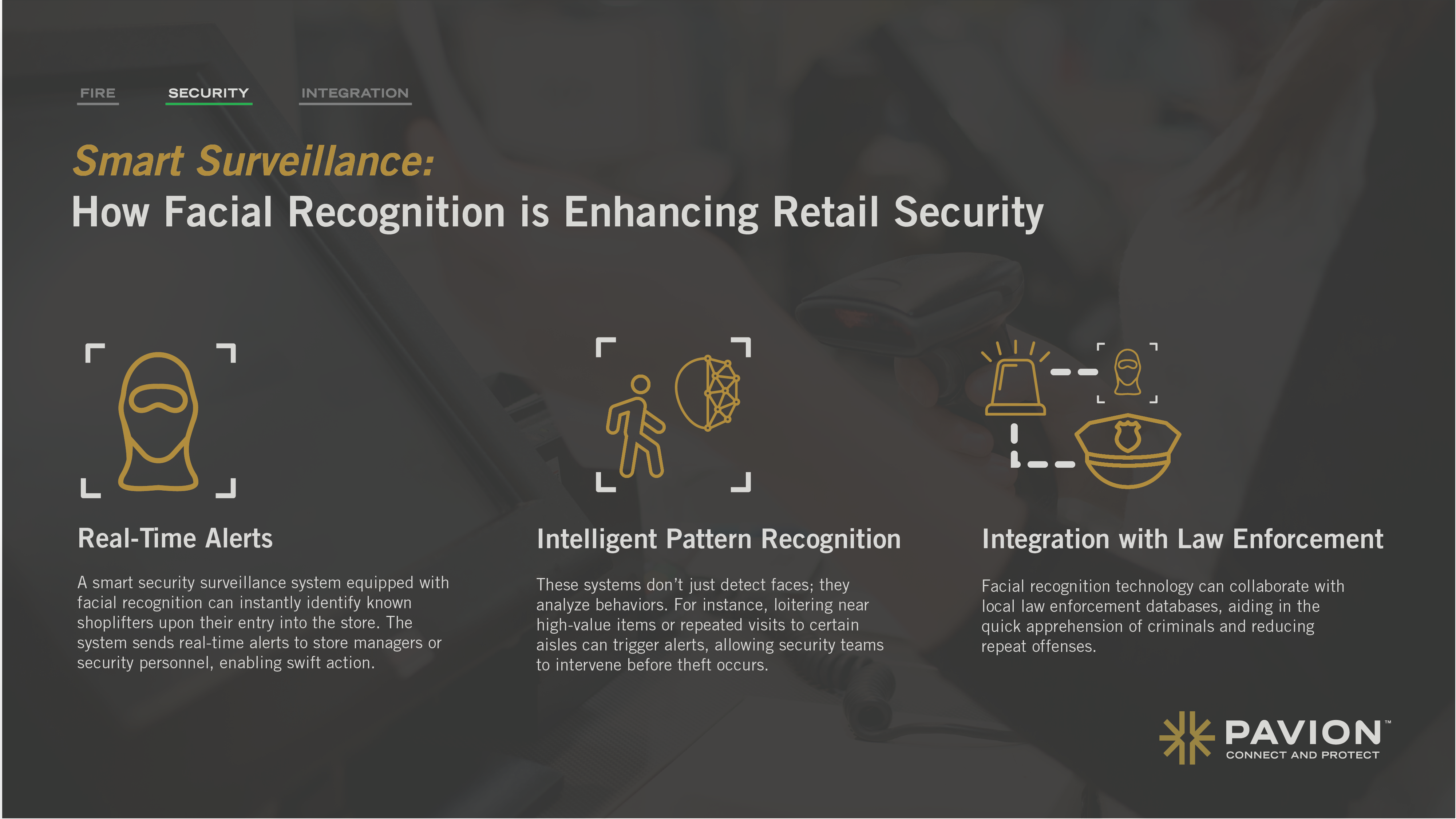
Smart Surveillance: How Facial Recognition is Enhancing Retail Security
In the fast-paced retail industry, safeguarding assets while delivering exceptional customer experiences is more critical than ever. Retailers face constant challenges, from preventing theft to understanding shopper behavior. Enter smart surveillance—a transformative approach leveraging facial recognition technology to address these challenges effectively.
Facial recognition, once a futuristic concept, is now a reality reshaping retail security. Combined with advanced smart security surveillance systems, this innovation offers a dual advantage: bolstering theft prevention and providing actionable customer insights. Let’s explore how this technology is revolutionizing retail.
The Rise of Smart Surveillance in Retail
The retail landscape has always been a prime target for theft, resulting in significant revenue losses. Traditional security measures, like static cameras or periodic patrols, are often insufficient to deter or catch perpetrators in real-time.
Facial recognition security cameras are a game-changer. By integrating this technology into a smart professional surveillance system, retailers can now:
- Identify Repeat Offenders: Facial recognition systems can flag individuals with a history of shoplifting, alerting staff instantly.
- Enhance Deterrence: Visible surveillance systems with facial recognition capabilities discourage criminal activities by signaling advanced security measures.
- Streamline Investigations: Instead of sifting through hours of footage, these systems quickly identify suspects, saving time and resources.
Moreover, facial recognition is not limited to loss prevention. It is a powerful tool for understanding customer preferences and improving their shopping experiences.
“Facial recognition technology isn’t just about catching shoplifters—it’s about giving retailers the tools to be proactive rather than reactive. It’s a game-changer for the industry.”
– Pete Bacol, Director of Sales, Retail
Facial Recognition for Theft Prevention
Retail shrinkage, driven by shoplifting, employee theft, and other factors, is a persistent issue. Live remote video monitoring paired with facial recognition provides retailers with a proactive defense mechanism.
1. Real-Time Alerts
A smart security surveillance system equipped with facial recognition can instantly identify known shoplifters upon their entry into the store. The system sends real-time alerts to store managers or security personnel, enabling swift action.
2. Intelligent Pattern Recognition
These systems don’t just detect faces; they analyze behaviors. For instance, loitering near high-value items or repeated visits to certain aisles can trigger alerts, allowing security teams to intervene before theft occurs.
3. Integration with Law Enforcement
Facial recognition technology can collaborate with local law enforcement databases, aiding in the quick apprehension of criminals and reducing repeat offenses.
Enhancing Customer Insights with Facial Recognition
Beyond security, facial recognition has significant potential to transform customer experiences. By analyzing facial data, retailers can gain deeper insights into shopper demographics, preferences, and behaviors.
“Smart surveillance systems with facial recognition go beyond security. They help retailers understand their customers better, creating opportunities for personalized experiences that build loyalty.” – Pete Bacol, Director of Sales, Retail
1. Personalized Experiences
Facial recognition systems can identify loyal customers as they enter the store. Paired with purchase history and preferences, staff can offer tailored recommendations, creating a more engaging shopping journey.
2. Traffic Flow Analysis
Facial recognition systems track customer movements, helping retailers understand traffic patterns and optimize store layouts. For example, if certain aisles are frequently visited, retailers can strategically place high-margin products in those areas.
3. Sentiment Analysis
Facial recognition can analyze customers’ expressions to gauge their satisfaction levels. Are they frustrated with long lines? Excited about a promotion? These insights allow retailers to make real-time adjustments to improve the in-store experience.
Addressing Privacy Concerns
While the benefits of facial recognition in smart professional surveillance systems are undeniable, privacy concerns often arise. Retailers must take steps to ensure transparency and ethical use of this technology.
“Transparency and ethical use are critical when implementing facial recognition in retail. By prioritizing data security and clear communication with customers, retailers can build trust while leveraging cutting-edge technology.”
– Pete Bacol, Director of Sales, Retail
1. Informed Consent
Inform customers about the use of facial recognition technology through signage and policies. Transparency builds trust and ensures compliance with regulations.
2. Data Security
Facial recognition data should be encrypted and stored securely. Partnering with reputable vendors offering robust cybersecurity measures is essential to safeguard sensitive information.
3. Limited Use Cases
Clearly define the purposes of facial recognition—whether for security or customer experience—and avoid unnecessary data collection to respect customer privacy.
Smart Surveillance in Action: A Case Study
Consider a large retail chain plagued by rising theft and inconsistent customer engagement. By adopting a smart surveillance system with facial recognition, they achieved the following:
- 50% Reduction in Theft: Real-time alerts and advanced monitoring deterred shoplifters effectively.
- Enhanced Customer Retention: Loyal customers received personalized offers, improving their shopping experience.
- Improved Efficiency: Staff could focus on proactive security and customer service rather than reactive measures.
This example highlights how facial recognition is a powerful tool for both security and customer engagement.
The Future of Retail Security
As technology evolves, so does the potential of smart security surveillance systems. Future innovations may include integrating facial recognition with AI-driven inventory management or using augmented reality to enhance the in-store experience further.
Retailers adopting these technologies early will gain a competitive edge, securing their stores and fostering stronger customer relationships.
Unlock the Potential of Facial Recognition
Facial recognition is no longer just about safety; it’s about smarter operations and better customer experiences. Whether it’s deterring theft with live remote video monitoring or creating personalized shopping journeys, this technology is revolutionizing the retail industry.
Ready to elevate your retail security strategy?
Discover how facial recognition can transform your business today!

